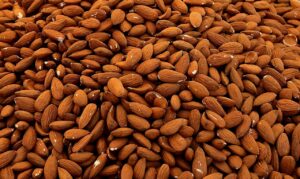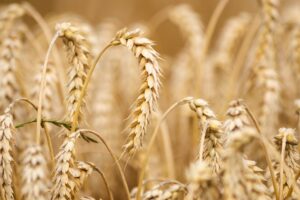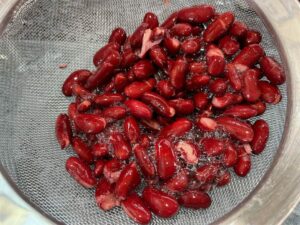Why do we eat? Eating is the process by which humans acquire energy and nutrients, both critical for survival. Energy without nutrients, however, is just empty calories. Think sugar, beer, rice, etc. Pure energy without significant nutritional value.
Our bodies can synthesize some nutrients, but there are many essential nutrients – amino acids, fatty acids, vitamins, and minerals – termed essential because our bodies require them for normal physiologic functions, and we must acquire these nutrients in our diet because they cannot be synthesized by the body.
Nutrient thieves
 As if nutrition isn’t complicated enough, there are actually chemicals in foods that are working against our efforts to acquire quality nutrients.
As if nutrition isn’t complicated enough, there are actually chemicals in foods that are working against our efforts to acquire quality nutrients.
As observed in the oyster study, the absorption of zinc was significantly impaired when oysters were consumed with black beans or corn tortillas compared to oysters alone, suggesting the presence of antinutrients.
Antinutrients are chemicals which have been evolved by plants for their own defense, among other biological functions and reduce the maximum utilization of nutrients especially proteins, vitamins, and minerals, thus preventing optimal exploitation of the nutrients present in a food and decreasing the nutritive value. Some of these plant chemicals have been shown to be deleterious to health or evidently advantageous to human and animal health if consumed at appropriate amounts. (ref)
Common antinutrients
Phytates
Phytates are found exclusively in plants, present in plant seeds (esp. almonds), legumes, peanuts, cereals, grains, and other plant foods. They are the primary storage form of plant phosphate. However, the phosphate bound to phytate is not bio-available to humans. The phosphate must be released by enzymes in the first chamber of a ruminant’s (e.g. cow’s) stomach.
present in plant seeds (esp. almonds), legumes, peanuts, cereals, grains, and other plant foods. They are the primary storage form of plant phosphate. However, the phosphate bound to phytate is not bio-available to humans. The phosphate must be released by enzymes in the first chamber of a ruminant’s (e.g. cow’s) stomach.
Phytates bind multiple minerals including zinc, iron, calcium, magnesium, manganese, and copper. Populations that rely heavily on grains and legumes as dietary staples are thus at risk for deficiencies of these minerals. Phytates also inhibit our digestive enzymes like pepsin, trypsin, and amylase.
Tannins
 Tannins are found in a wide variety of plants and beverages including apples, berries, legumes, tea, coffee, wine, and chocolate. They’re responsible for giving these foods a bitter, dry taste.
Tannins are found in a wide variety of plants and beverages including apples, berries, legumes, tea, coffee, wine, and chocolate. They’re responsible for giving these foods a bitter, dry taste.
There appears to be some adaptation developed over time to tannin exposure to lessen their impact. Interestingly, tannins administered via the rectum or the skin appear to cause liver toxicity, whereas that effect has not been observed by oral tannin consumption, suggesting the presence of other defense mechanisms against tannin toxicity in our gut (ref).
Tannins inhibit the absorption of iron and inhibit several digestive enzymes.
Oxalates
Oxalates are found throughout the plant world, with the highest amounts in spinach, chard, sweet potatoes, beets, and rhubarb. They are also present in smaller amounts in legumes (soybeans > lentils/peas > chickpeas > common beans), cruciferous vegetables (kale, radishes, cauliflower, broccoli), whole grains, nuts, cocoa, and tea.
with the highest amounts in spinach, chard, sweet potatoes, beets, and rhubarb. They are also present in smaller amounts in legumes (soybeans > lentils/peas > chickpeas > common beans), cruciferous vegetables (kale, radishes, cauliflower, broccoli), whole grains, nuts, cocoa, and tea.
They form strong bonds with minerals such as calcium, magnesium, iron, sodium, and potassium. Calcium oxalate salts form crystals and tend to precipitate in the urinary tract and are responsible for 75% of kidney stones. The oxalate content of spinach accounts for the fact that only 5.1% of calcium and as little as 2% of iron is actually absorbed (ref).
In the gastrointestinal tract, they bind nutrients and cause irritation to the intestinal lining. Individuals with inflammatory bowel disease are at higher risk of calcium oxalate kidney stones, believed to be due to increased absorption of oxalates through the inflamed intestinal wall.
Some individuals are sensitive to small amounts of oxalates, which can cause burning in the eyes, ears, mouth, and throat, with larger amounts causing abdominal pain, nausea, diarrhea, and muscle weakness.
Lectins
Lectins are proteins found in most plant foods that protect the plant from microbes such as bacteria, viruses, fungi, and parasites. In agricultural applications, plants have been genetically modified to express higher concentrations of lectins to protect crops against pests.
When consumed, lectins bind to our small intestines and have many toxic effects on intestinal function including causing the formation of holes in the gut wall – leaky gut syndrome (ref). Lectins can disrupt the immune system to trigger food allergies and autoimmune disease. They can also cause anemia by binding red blood cells together.
The lectin in wheat products is known as gluten, which is particularly problematic, with gluten allergies affecting 13% of the population. Today’s wheat contains 90% more lectins than the wheat grown a couple generations ago.
Goitrogens
Goitrogens interfere with iodine uptake and thus affect thyroid function via the presence of glucosinolates. Goitrogen-rich foods include broccoli, cabbage, cauliflower, mustard greens, Brussels sprouts, and kale.
Saponins
Saponins form a waxy, protective layer around the skin of plants and give them a bitter taste, a defense against predators. Derived from the Latin word ‘sapo’ meaning soap, they are responsible for the foam that appears when cooking lentils or beans in water. Licorice root and legumes are the richest sources of saponins. Other sources include quinoa, oats, grapes, and a wide variety of vegetables.
Saponins bind iron, zinc, and calcium. They also can cause rupture of blood cells and can be toxic if administered intravenously. They are deadly to cold blooded animals such as fish and snails, and they are used as fish poisons by Aboriginal cultures (ref). Some saponins also cause injury to the gut wall and increase its permeability (ref).
Phytoestrogens
Phytoestrogens are compounds that are structurally similar to estrogen. Because of this similarity, they can bind to estrogen receptors and mimic estrogen activity. The 2 types that are most relevant to the human diet are isoflavones and lignans. Isoflavones are found predominantly in soybeans, and lignans are found in flaxseeds and other cereals.
There are concerns that phytoestrogens have adverse effects on the endocrine system (e.g thyroid function) and may stimulate the growth of estrogen-sensitive cancers, potentially posing a concern to individuals with a history or family history of breast cancer.
Foods highest in antinutrients
- Kidney beans – the most striking example of a food containing antinutrients, with high levels of a lectin called phytohemagglutinin. Eating raw kidney beans can cause severe gastrointestinal illness.
- Wheat – contains the lectin gluten
- Soy – contain multiple antinutrients: phytates, saponins, and tannins. These antinutrients are mostly neutralized by fermentation.
- Spinach; Chard – high in oxalates
- Peanuts – high in phytate
- Chickpeas – contain the antinutrients lectins, tannins, phytates, and saponins. These antinutrients can be neutralized in chickpeas that are soaked, sprouted, or boiled.
- Coffee, tea, wine, and chocolate – contain tannins.
- Seeds – often contain phytates, as in almonds.
- Cruciferous vegetables – contain oxalates and glucosinolates (goitrogens)





